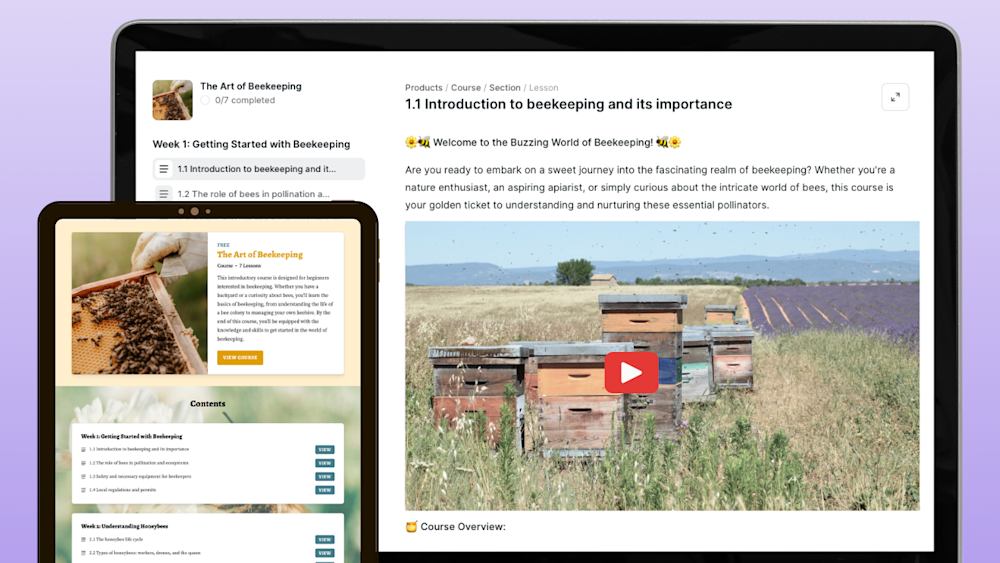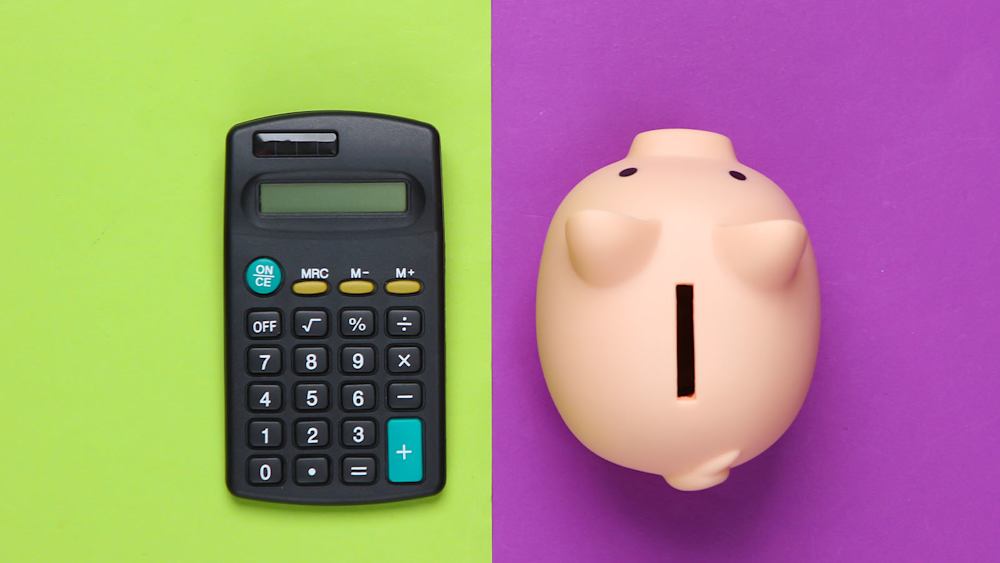Today, we’re here to make your course building easier.
We share with you a few simple slide deck ideas with ready-made templates that you can use to create compelling online course lessons — no matter your niche topic.
There’s no time like the present, so let’s dive right into our five templates.
Storytelling slide deck templates
It doesn’t matter if your course content is as technical as coding or as creative as learning how to paint — storytelling is a powerful way to teach your topic.
So much so that messages delivered as stories are up to 22 times more memorable than just facts.

On a neuroscience level, compelling stories can trigger the release of oxytocin, the chemical responsible for trust and emotional closeness (among other things).
To pepper storytelling into your course content, consider adding it to your intro lesson.
Your opening lesson is a great place to share more about yourself as an instructor, which you can do in storytelling form.
Rather than include everything about your background, the important points worth sharing in your course should cover two purposes:
-
Provide empathy— when your students believe that you know and understand them well, they’ll pay more attention to your lessons.
-
Instill confidence — when your students believe that they can get results, they’ll more likely follow the program all the way through.
An effective way to include both purposes in your intro lesson is to tell the story of how you experienced your students’ exact problem, and how you overcame it.
Of course, it goes without saying that images are powerful, especially in stories.
For instance, you can show a slide with images of your life before and after success, like Anastasia Blogger does at the start of her 5 Biggest Mistakes Online Course Creators Make webinar.

Images aside, though, storytelling is a solid way to build your credibility and show that you now have the expertise to lead your students to their goal.
Template #1. Personal storytelling introduction slide deck
As for the flow of your lesson, your storytelling slide deck can follow something like this:
In template form, you can grab your storytelling slide deck here.
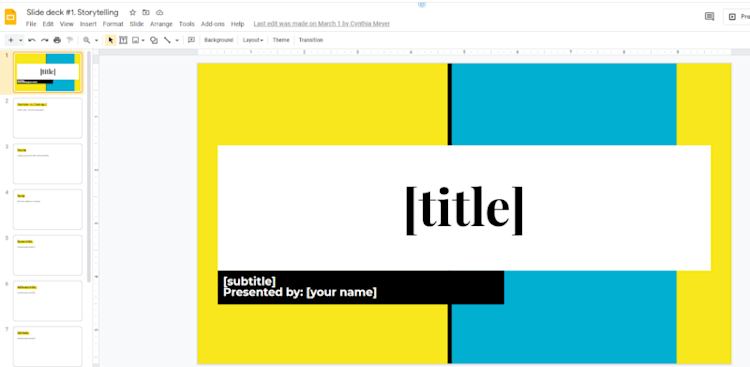
Template #2. Testimonial storytelling slide deck sequence and template
Alternatively, you can share how your successful students achieved results — another great topic that lends itself to storytelling.
Given that 92% of customers read online reviews before purchasing, and another 72% say positive testimonials increase their trust in a business, it’s obvious that testimonials and reviews are powerful.
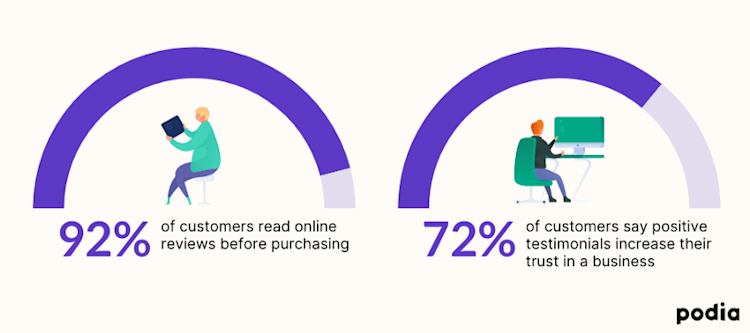
What’s more, the power in testimonials goes well beyond your selling process. They have their place in your course content, too.
More specifically, you can use testimonials as a way to motivate your students to excitedly onboard your course, and follow your lesson plans all the way to the finish line.
To use storytelling in the context of telling successful student stories, consider this slide deck sequence:
As for the template format, check out your testimonial story slide deck here.
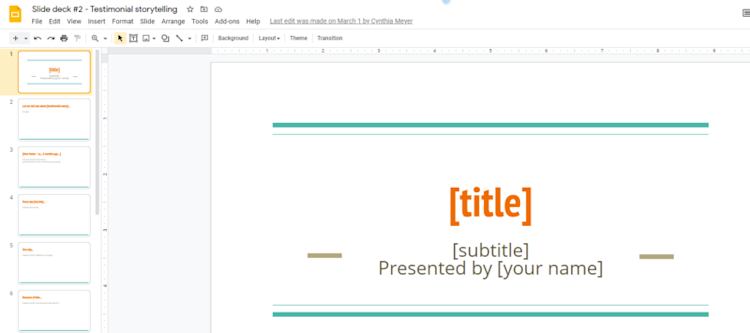
You can insert several testimonial stories to ignite action and encourage your students to become successful customers who complete your course.
I wouldn’t go overboard, though. In the same way that the impact of reviews caps out at five reviews, I’d follow the same signal in the testimonial stories you include in your course lesson.
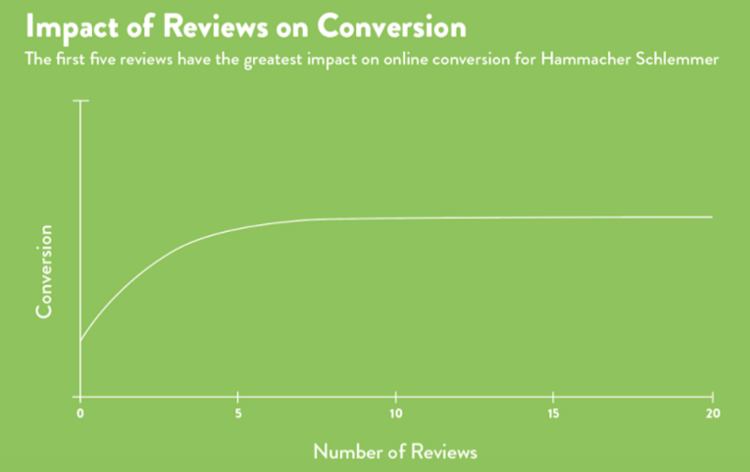
In a nutshell:
Storytelling is persuasive. Use it in your online course slide deck to encourage your students to take action toward their goals.
Now that you’ve got a slide deck format for motivating your students to move through your course and follow your lesson, it’s time to show them the nuts and bolts of achieving results.
Let’s move on to the how-to lesson slide deck.
How-to lesson slide decks
This lesson slide deck gives you a straightforward way to teach a course lesson.
The main goal is to teach your students how to achieve one result by the end of the lesson.
Having trouble laying out the steps?
Try following Jeff Bezos’ iconic method of “working backwards,” which also takes on the form of a recently published book.
It’s basically Amazon’s winning internal process of starting with the customer’s end result and working backwards to fill in the steps to the starting point.
Given that Amazon’s annual revenue growth has been, and continues to be, consistently gargantuan in its growth, it’s a method worth trying.
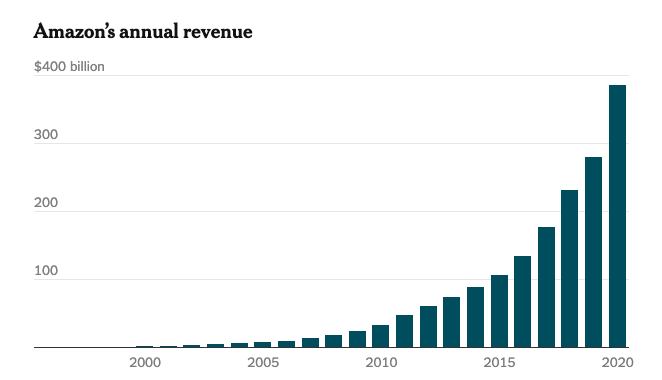
Template #3: The how-to lesson slide deck
Amazon’s unicorn growth aside, your how-to course lesson might look something like this:
You can access your straightforward how-to lesson slide deck here.
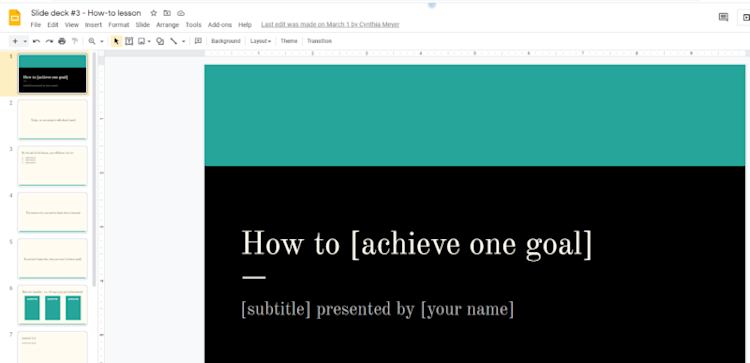
Template #4: The over-the-shoulder screen session slide deck
Beyond that, we’ve got one more how-to slide deck idea for you.
Sometimes, your how-to lesson will lend itself to recording an over-the-shoulder screen session of you demonstrating to your students how to achieve a result.
While recording your screen might be a fantastic way to show your students how to achieve their desired result, if you want to level up your presentation with a more polished look, insert some slide deck bookends and chapter breaks.
For instance, your course lesson might look like this:
And here’s this version in slide deck template form.
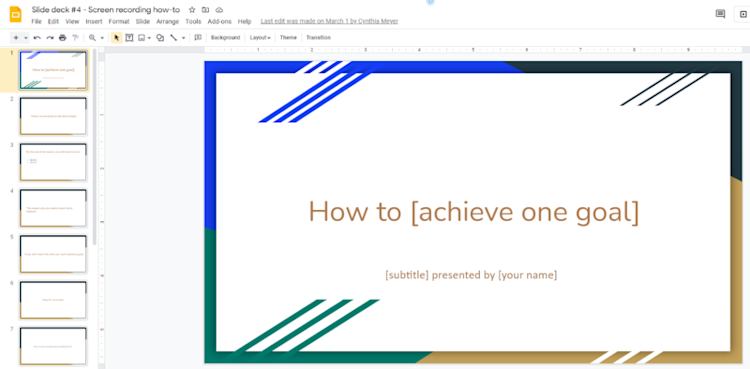
In sum:
To plan out your how-to lessons, start with the end result and work backwards.
Whether you use a slide deck presentation or screen recording, the goal is to walk your students from point A to B, demonstrating straightforward, simple steps along the way.
But OK. Every online course is different. What if you want to customize your slide decks even more?
We’ve got you covered. Our final slide deck template includes graphics in a choose-your-own-adventure style.
Visual explanation slides
Our final online course slide deck today is based on including visual content.
Visual content is so effective nowadays that marketers use it 10.5% more than they did just one year prior.
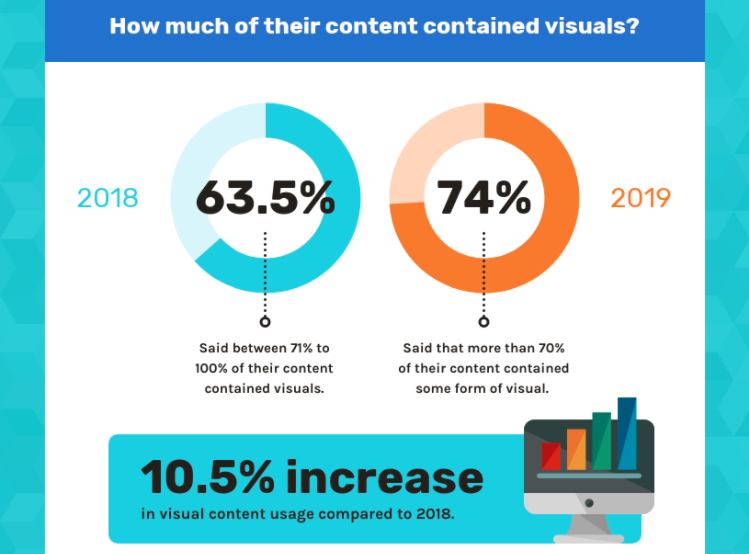
On top of that, people follow directions that include both text and illustrations a whopping 323% better than without illustrations.
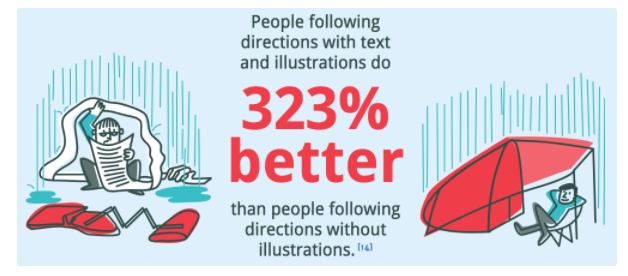
The relevant point here: visual content helps boost the completion rate of your online course — and anything that lifts online course completion rates is helpful.
Especially when you consider the most recent popular study by Massive Open Online Courses (MOOC), which reveals completion rates land between only 15–40%.
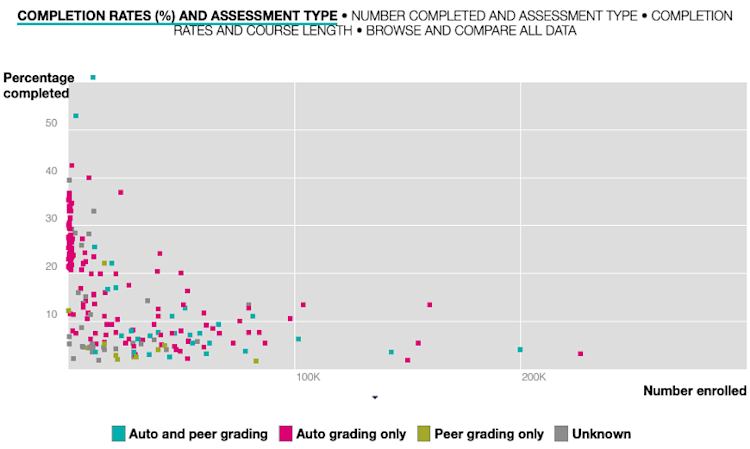
To help you include more graphic content into your online course lessons, we provide you with some ideas in slide deck form.
For instance, if you’re presenting a lesson with mainly audio, you can easily turn it into a visual video lesson by recording your voice over a single slide, just like Justin Jackson’s course lesson.
It adds an extra interesting element on top of the audio content without competing with it.
As you go through our template, rather than use the slide deck template as a sequence to follow, use it as a menu to choose from.
In other words, pick and choose the slides that fit nicely into your presentation.
The purpose of our templates in this section is to help you create more visually compelling course lessons by pulling from a slide deck of visual elements.
Also, with anything visual in your slides, follow the branding tip of showcasing your brand everywhere possible. This means using design elements — like colors, images, and type fonts — that are consistent with your brand.
Template #5: The data visualization slide deck
The ideal sequence of visual-oriented slides is as follows:
You can access your visual explanation slide deck template here.
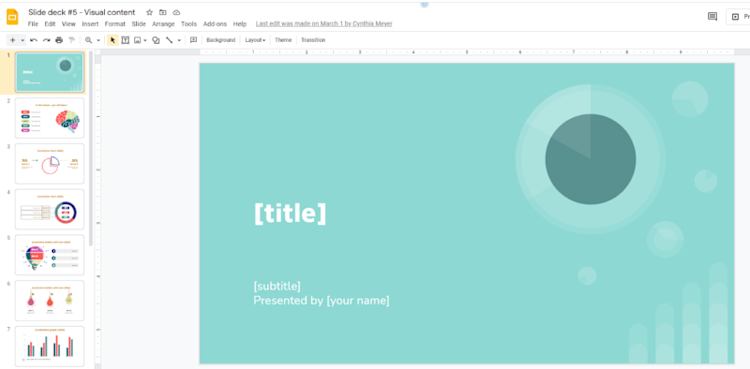
Set your students up for success with compelling online course slide decks
You don’t have to create your online course slide decks from scratch.
Just customize our slide deck templates:
-
#1. Use personal storytelling to build your credibility and trust among your audience.
-
#2. Use storytelling to share successful journeys of previous students and customers.
-
#3. Show your students how to complete a task by explaining exact steps in your unique process.
-
#4. Demonstrate how to complete your unique process by sharing an “over the shoulder” screen share between chapter slides.
-
#5. Use visuals to make your online course lesson more compelling and memorable.
Happy course creating.

